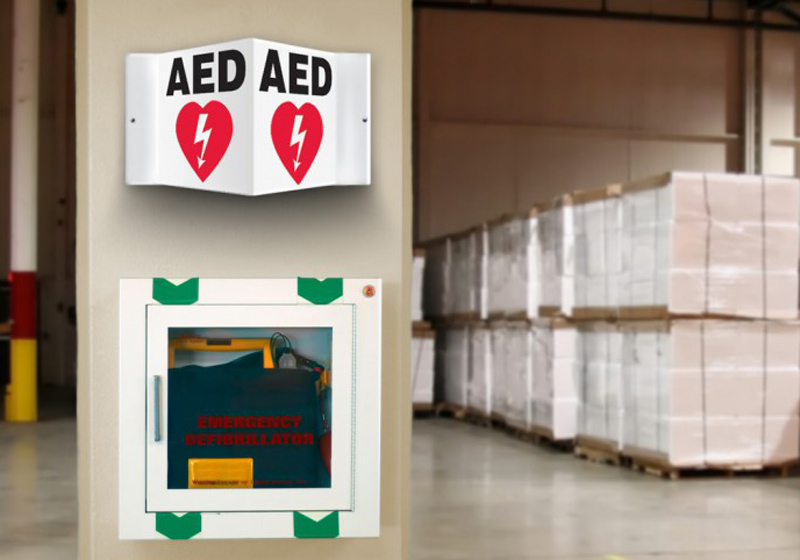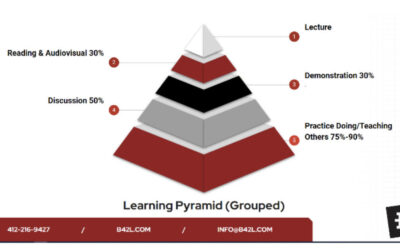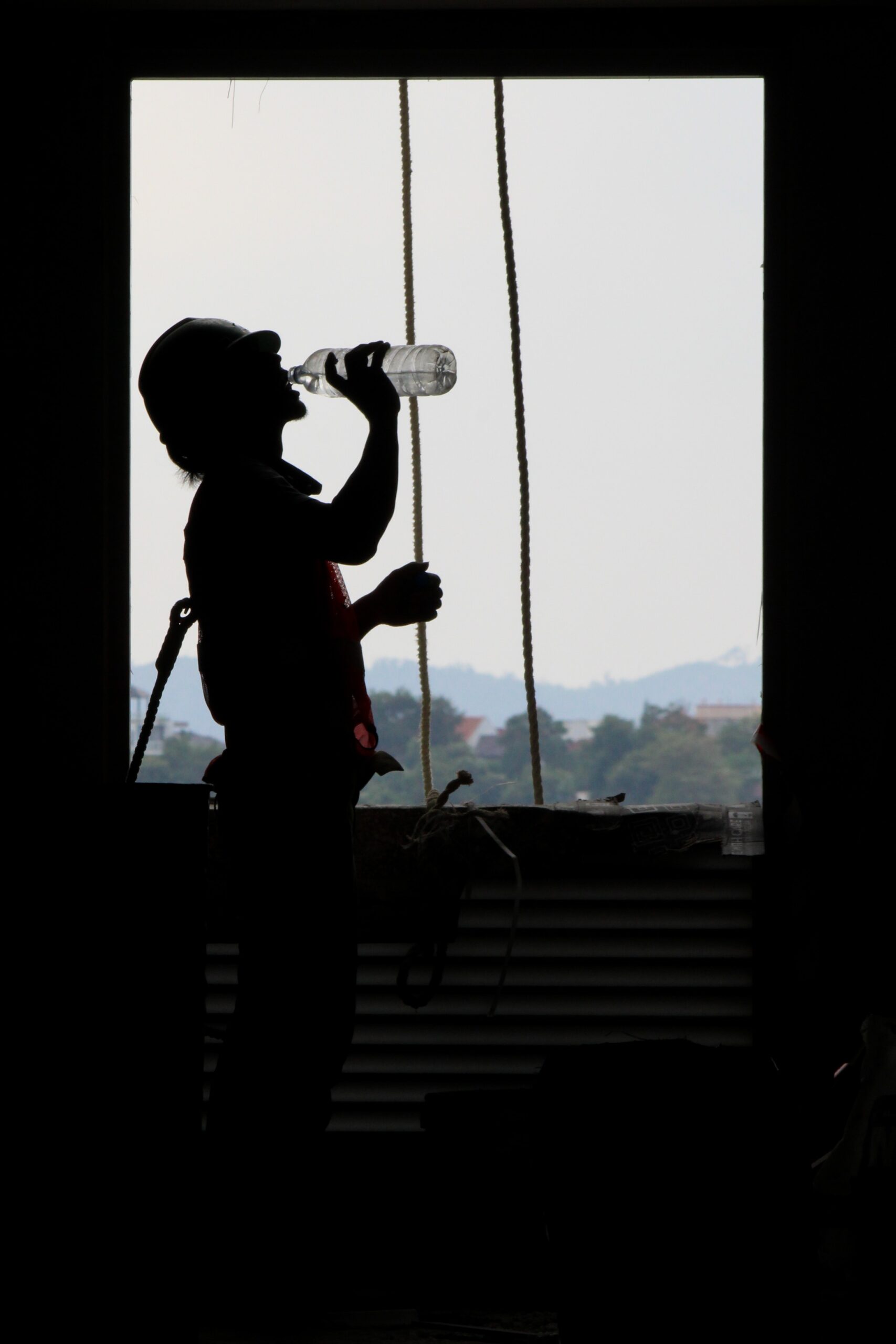
Sep 24, 2018 | Health, Safety
Heart disease is the leading cause of death in the United states. Over 500,000 men and women die each year from heart disease in the United States alone.
What is Heart Disease
Heart disease is synonymous with coronary artery disease. Coronary artery disease causes both angina and heart attacks (myocardial infarctions). The cardiovascular system is affected by other heart diseases such as:
- Congestive heart failure (the heart is beating too ineffectively to pump blood)
- Aneurysms (when the aorta has swelled up and created a bulge in the artery)
The heart acts as a pump and its purpose is to circulate blood to the body. There are 4 chambers in the heart that allow this to happen.
The first 2 chambers of the heart are called ventricles. The left and right ventricles have srong muscular walls that pump blood out of the heart. The second two chambers, known as the left and right atrium, pump blood into the heart.
The heart itself receives its blood from 3 coronary arteries. Coronary artery disease occurs when there is a buildup of plaque inside the coronary arteries, resulting in a condition known as atherosclerosis. When there is a sufficient amount of plaque build up in the arteries of the heart, angina occurs. Angina will cause cell death in the heart which causes a person to experience a heart attack, and produces severe chest pain in its victims.
Although cancer makes up 30% of annual deaths per year in the United States, heart disease still outweighs the total amount of deaths caused by cancer and influenza. Heart disease plays a part in 1 of every 4 deaths per year.

Heart Disease That Leads To a Heart Attack
As we previously discussed, heart disease is a blanket term used to describe multiple heart issues. Heart attacks are a life threatening issue resulting from heart disease.
A heart attack occurs when blood flow to part of the heart is blocked, causing cells and tissues to die. If you think someone is experiencing a heart attack, you need to act fast. Call 911 or the designated emergency phone number and monitor the individual. Heart attacks often lead to cardiac arrest.
Am I At Risk For Heart Disease?
The biggest risk factors associated with heart disease are high blood pressure and high cholesterol levels. Another key risk factor in developing heart disease is smoking tobacco. The CDC reported that nearly 47% of all Americans have at least one of these risk factors.
Other risk factors associated with heart disease are:
- Being overweight or obese
- Having a poor diet
- Excessive alcohol use
- Not being physically active
Reducing the Risk of Heart Disease
You can reduce your risk of developing coronary heart disease with simple lifestyle practices.
- Have a healthy diet: Eating the correct amount of fruits and vegetables as well as having lower sodium and lower fat diets reduce the risk of CAD.
- Exercising regularly: Keeping the heart healthy means you have to challenge it. You should be having consistent anaerobic and aerobic exercises built in to your lifestyle.
- Medication: Some medications may be used to treat risk factors associated with high cholesterol and high blood pressure which in turn has a huge impact on heart rate and blood flow.
- Talk to your doctor: You should be going to your family doctor for your annual check up where you can discuss any relevant health concerns.
- Find a health coach: Health coaches are a great way to implement routine and accountability when you want to change your lifestyle.
The Best Pittsburgh Health and Fitness Resources:
Part of finding an answer to a problem is becoming the change. Every day you can wake up and choose to live a healthy lifestyle. Here are a few other resources to use:
6ycle
6ycle is an upbeat and inviting indoor spinning club! They offer more than just spinning though. They have classes in pilates and yoga as well. Aerobic exercises is one way to make sure you are challenging your heart and keeping healthy blood flow.
Check them out: http://6ycle.com/classes-3/
Team Wade Fitness
This team specializes in both fitness and nutrition. You don’t have to be an athlete (although they do train the best) to come to this club in Pittsburgh, PA. Keeping a healthy and monitored diet and anaerobic strength conditioning will help reduce the chances of developing heart disease.
Was this helpful? Leave a comment and connect with us on social media or you can visit our website at www.B42L.com
Sources
https://www.cdc.gov/heartdisease/coronary_ad.htm

Sep 21, 2018 | Health, Safety
AED stands for Automatic External Defibrillator. AEDs are used in cardiac emergencies like sudden cardiac arrest (SCA). You should always know how to use an AED in the event of an emergency situation. If a victim is suffering from Sudden Cardiac Arrest (SCA), and receives a shock within the first minute, there is a 90% survival rate.
Here are 10 tips for using an AED:
1. Where do the AED pads go on the adult?
Every AED model is different. Most AED kits come with 2 sets of pads. One set of AED pads is used for an infant and there is a set of AED pads used for the adult. AED placement for adults and infants is different. AED pad placement for adults is: one pad on the upper right portion of the chest and one pad under the left armpit. Make sure to keep the AED pads across from one another, as the AED pads should never touch each other.
2. Where do the AED pads go on the infant?
When dealing with an infant, you should put one AED pad on their chest and one on their back. People often ask, “What is the cut off age for an infant?” There is no set cut off age, so make sure you familiarize yourself with proper training to determine what size AED pad you should use on the victim.
3. Can I use an AED if it is raining?
AEDs are built for all weather conditions. You CAN use an AED if it is raining. First, be sure to dry the victim off and remove any wet clothing the victim is wearing. When using an AED it is important to always have the victim’s chest dry.
4. Can I use an AED if the victim has a pacemaker?
Yes, you can use an AED if the victim has a pacemaker. The implantable cardioverter-defibrillator, also known as a pacemaker, is located inside the body and works to correct cardiac arrhythmias. When you put the AED pads on someone who has a ICD, make sure the AED pads are not directly over top of the victim.
5. Will the AED tell me what to do?
Most Automatic External Defibrillators (AEDs), have audio or visual prompts. If you are using an AED, make sure to read the instructions and follow the commands the machine prescribes. The AED will give instructions to shock the victim if necessary.
6. Do I need to be certified to use an AED?
You should be certified if you use an AED. Good Samaritan laws protect lay responders who act within their scope of practice. If you choose to use an AED and you are not certified, you may be subject to lawsuits. AED certifications are built into CPR certification classes. You can always make a phone call to have properly trained personnel use an Automatic External Defibrillator.
7. How do I use an AED?
Most AED models have a button to turn the device on. The AED will most likely give visual and audio prompts after it is applied to the victim. You should never touch the victim when the AED is analyzing the victim. The AED detects heart activity and sends an electrical shock through the body, allowing the heart to reset itself. Some models like the ZOLL AED Plus have reference guides ready for your use.
8. Do AEDs expire?
AEDs should be serviced regularly. You should always stay up to date with local and federal laws when servicing your AEDs. AED pads should be replaced as well as the batteries.
9. How can I get certified to use an AED?
Getting an AED certification is a fairly easy process. You can sign up for classes online. We feel that it is important to take a hands on AED class that also has a lecture. The reason you should take the class in person is because you should always practice real world situations when becoming certified in using an AED.
Visit B42L.com to sign up for a class to become certified in CPR/AED/First Aid. You can also Google your local American Heart Association or American Red Cross. All B42L trainers are certified instructors through The American Red Cross.
10. Should I use an AED if someone is having a heart attack?
You should never use an AED if someone is having a heart attack. AEDs should be used when someone is suffering from Sudden Cardiac Arrest. The AED will not shock a person if it is not needed and it is important to get an Automatic External Defibrillator in case the victim’s condition gets worse.
The Cardiac Chain of Survival depends on early defibrillation. There are over 400,000 out of hospital victims of sudden cardiac arrest every year. Becoming prepared in the event of an emergency can save life.
Every minute that passes without the use of an AED is a 10% reduction in the chance of survival. If 10 minutes goes by without the use of an automatic external defibrillator and CPR and chance of survival is almost 0%.
Take a look at these stories where an AED helped save a life:
SRU student saves a life on campus
https://www.youtube.com/watch?v=4_iHFivnn-U&t=7s
Story Highlights: A victim was suffering Sudden Cardiac Arrest when performing theatre exercises. When the victim did not get up after an exercise, a student promptly acted. Samantha called 911 and used her certification to help save a life.
High school athlete suffers cardiac arrest during volleyball match
https://www.youtube.com/watch?v=4pzfYyTxPzU
Story Highlights: Clair Crawford was playing in her volleyball match when her chest had sharp shooting pain. Clair entered cardiac arrest in the middle of the game. Clair was revived by the use of CPR/AED by bystanders and tells her story.
Can I get Certified?
B42L offers certifications in CPR/AED and First Aid. Students also receive a discount for training. Sign up online to reserve a seat. B42L also has other resources for safety professionals in multiple industries. We travel to provide hands-on onsite training to businesses in the Pittsburgh Area.
Visit B42L.com to save your seat and check out other safety resources.
Was this helpful? Leave a comment and connect with us on social media or you can visit our website at B42L.com.







